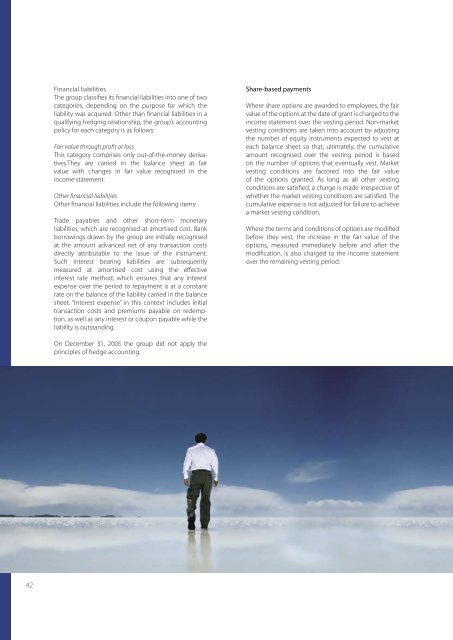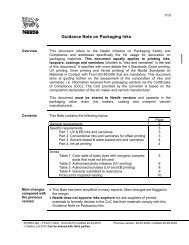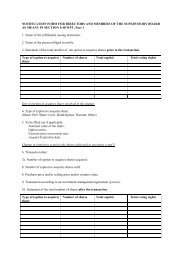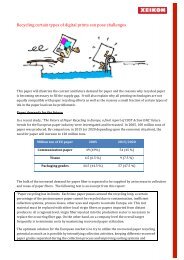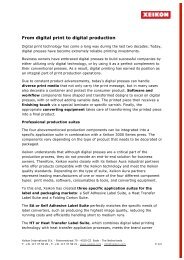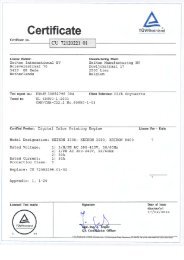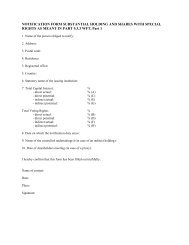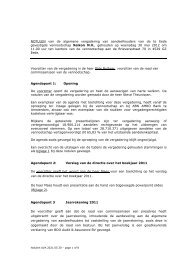Annual report 2005 - Xeikon
Annual report 2005 - Xeikon
Annual report 2005 - Xeikon
You also want an ePaper? Increase the reach of your titles
YUMPU automatically turns print PDFs into web optimized ePapers that Google loves.
Financial liabilities<br />
The group classifies its financial liabilities into one of two<br />
categories, depending on the purpose for which the<br />
liability was acquired. Other than financial liabilities in a<br />
qualifying hedging relationship, the group’s accounting<br />
policy for each category is as follows:<br />
Fair value through profit or loss<br />
This category comprises only out-of-the-money derivatives.They<br />
are carried in the balance sheet at fair<br />
value with changes in fair value recognised in the<br />
income statement.<br />
Other financial liabilities<br />
Other financial liabilities include the following items:<br />
Trade payables and other short-term monetary<br />
liabilities, which are recognised at amortised cost. Bank<br />
borrowings drawn by the group are initially recognised<br />
at the amount advanced net of any transaction costs<br />
directly attributable to the issue of the instrument.<br />
Such interest bearing liabilities are subsequently<br />
measured at amortised cost using the effective<br />
interest rate method, which ensures that any interest<br />
expense over the period to repayment is at a constant<br />
rate on the balance of the liability carried in the balance<br />
sheet. “Interest expense” in this context includes initial<br />
transaction costs and premiums payable on redemption,<br />
as well as any interest or coupon payable while the<br />
liability is outstanding.<br />
Share-based payments<br />
Where share options are awarded to employees, the fair<br />
value of the options at the date of grant is charged to the<br />
income statement over the vesting period. Non-market<br />
vesting conditions are taken into account by adjusting<br />
the number of equity instruments expected to vest at<br />
each balance sheet so that, ultimately, the cumulative<br />
amount recognised over the vesting period is based<br />
on the number of options that eventually vest. Market<br />
vesting conditions are factored into the fair value<br />
of the options granted. As long as all other vesting<br />
conditions are satisfied, a charge is made irrespective of<br />
whether the market vesting conditions are satisfied. The<br />
cumulative expense is not adjusted for failure to achieve<br />
a market vesting condition.<br />
Where the terms and conditions of options are modified<br />
before they vest, the increase in the fair value of the<br />
options, measured immediately before and after the<br />
modification, is also charged to the income statement<br />
over the remaining vesting period.<br />
On December 31, <strong>2005</strong> the group did not apply the<br />
principles of hedge accounting.<br />
42


